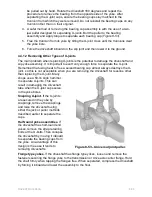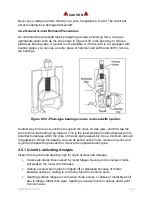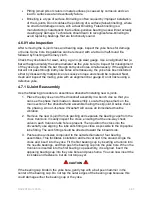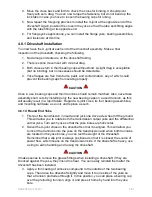
5. Forward crankshaft driven-is driven by gearing at the front of the engine
crankshaft, and is used in applications that require auxiliary power while the truck
is in motion, such as a cement truck.
6. Rear crankshaft or flywheel driven-is sandwiched between the bell housing and
the transmission and permits continuous operation while the engine is running.
The objective of a PTO is to provide driving torque to auxiliary equipment such as
pumps, compressors, and winches. The driven equipment can be mounted either
directly to the PTO or indirectly using a small drive shaft. The PTO input gear is placed
in constant mesh with a gear in the truck transmission. The PTO may couple into a
transmission by a means of a dedicated PTO gear on the transmission countershaft.
Any rotation of the PTO countershaft gear drives the PTO input gear. The on/off
capability required by a PTO is provided within the PTO assembly.
Gears in most PTO units can either be spur or helical. Establishing the correct mesh
between the PTO drive gear and its partner in the transmission is critical: too little or too
much backlash can produce problems. Backlash is defined as the space between
meshing surfaces of the gears in gearbox devices. Space is needed for expansion
caused by heat and viscosity changes in lubricants. Refer to the PTO service manual
for the correct backlash adjustment procedure which is to be performed on every PTO
installation. Use of a dial indicator is recommended. The recommended backlash
between the transmission and PTO is from .006 to .012 inches.
Too many gaskets will create too much backlash and cause the PTO to rattle when
running at no load. To correct - remove one or more gaskets and recheck backlash.
Too few gaskets will cause PTO to whine and may cause difficult shifting of the PTO
and transmission. To correct - add one or more gaskets and recheck backlash. PTOs
will not always make noises when improperly spaced. Correct backlash must also be
established when gear adapters are used. Transmissions using automatic transmission
fluid may have higher noise levels caused by the thinner consistency of the lubricant
and the large PTO drive gear in the transmission.
Gear ratio is also critical in PTO operation. Gear ratio must be set to the torque capacity
and operating speed required of the driven equipment.
As previously mentioned, some PTOs function when the vehicle is running and they can
operate at a fixed ratio of engine speed, while others vary depending on which gear the
transmission is in. Other PTOs are designed to work only when the transmission has
been shifted to the neutral position. All transmission-mounted PTOs are clutch-
dependent in that they transmit torque only when the vehicle clutch is engaged.
Flywheel and forward crank-shaft-driven PTOs operate independently of vehicle clutch
engagement, so they are used in applications where continuous auxiliary power is
required as previously mentioned; a cement transit mixer is an example.
Several types of shift mechanisms are used to connect the power takeoff with operator
controls. Cable, lever, electric-over air, and electric are options used on trucks. The
newest version is electronic-over electric PTOs.
Most PTOs feature simple designs and rugged construction. Care should be taken to
properly mount a PTO. Setting backlash to specification is critical; this operation is
performed by setting the gasket thickness at the PTO mounting flange. Contaminated
transmission oil can damage a PTO, so regular maintenance is important.
NAVEDTRA 14050A
8-46
















































